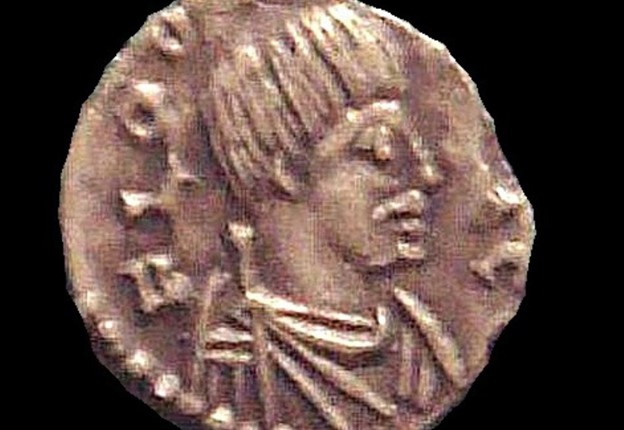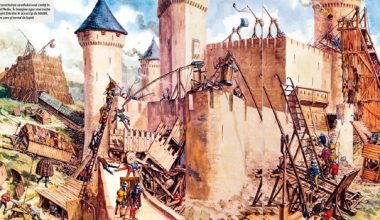Odoacer was the first king of Italy when he dethroned the last emperor Romulus-Augustulus, whose reign marked the end of the Western Roman Empire. Although his reign was considered by some people as devoid of events, he didn’t introduce innovations, he has successfully maintained the order, culture and last vestiges of the civilization of the Roman Empire.
Nothing is clear about his first years of life. In general, his ethnicity is considered to be Germanic, but the identity of his parents and where he has grown, are still subjects seriously debated by historians.
Most historians agree that he seems to have been the son of Edeko, a vassal of the Huns, king of a German tribe and Attila’s trusted advisor. Through him he was
sent to Rome as ambassador. Before joining the Roman army, it is believed that Odoacer fought for his father.
Odoacer first appears in history in a minor role in the struggle the Visigoths in 463 CE. By the year 470 CE he had become an officer in the Roman army. During this time, Byzantine emperor Leo I named Julius Nepos as Western Roman emperor; Nepos appointed a general named Orestes as head of the army against the wishes and advice of the Roman senate. The senate didn’t trust Orestes because he was not a Patrician and had fought for the armies of Attila against Rome. Moreover, he was very popular among the army, which was a cause for concern.
Once at the helm of the army, Orestes and his troops send Nepos into exile and Romulus Augustulus, son of Orestes, becomes Emperor. As a reward for their help, the soldiers asked Orestes for a third of the land of Italy. The problem was that those lands were already inhabited by Romanian citizens.
As expected, Orestes refused and his refusal was favorable to Odoacer. He assured the soldiers that if they came under his command they would be able to get what they wanted. Many soldiers joined him and managed to defeat and execute Orestes.
Two days after Orestes’ execution on September 4, 476, Romulus Augustulus was dismissed, which caused the fall of the Western Roman Empire. The Roman Senate approved of Odoacer and wrote to the emperor in the east (who, at this time, was Zeno) that the empire could easily be ruled from Constantinople in the east and by a king in the west.
The Emperor disagreed and demanded the resignation of Julius Nepos. Odoacru didn’t want to see Nepos assuming his power again, so he declares himself king. Though initially displeased, Emperor Zeno recognized that having a barbarian king in the west, instead of a co-emperor, would greatly increase his prestige as sole ruler of the Roman Empire and so approved Odoacer’s reign. At only 42, Odoacer was now the most powerful man in Italy.
Throughout his reign he is thought to have called himself “King of Italy” only once, and was referred to by his subjects as simply Dominus Noster (“our lord”). His relationship with the troops continued to be excellent, relying on mutual respect, as Odoacer was noted for his humility. Even so, his first act as king was to destroy those who might oppose him.
Throughout his reign, Odoacer embraced the model of Rome and conducted himself as a Roman ruler, even adopting the prefix “Flavius”, which was why he enjoyed the constant support of the Senate.
Even though he had been raised as an Arian, the fact that he allowed Trinitarianism to be practiced throughout kingdom is a testament to his wisdom and tolerance. The Arian heresy was the belief that Jesus had been an ordinary man, not equal to God, and therefore they did not believe in the trinity.
He annexed Sicily and Dalmatia to his kingdom and started wars in the east. These movements didn’t please Emperor Zeno, who considered them to be an increase in power that threatened his authority, so he made an alliance with Theodoric the Great, who was the King of the Visigoths. The treaty stated that after the defeat of Odoacer, Theodoric, in return for his efforts was to rule Italy for the emperor until he arrived in person.
For Zeno, this treaty was meant to attack two problems. On the one hand, there was Odoacer; on the other hand, Theodoric had also been causing problems in the Balkans. The emperor didn’t care which of the two was defeated; whichever one emerged from the war could be dealt with later.
Theodoric headed for Italy, conquering all the cities in his way. Whenever he met Odoacer, the latter was defeated. Even so, he wouldn’t give up and hostilities continued for a few years. On February 25, 493, a treaty was signed, by which Odoacer and Theodoric would rule jointly.
At a formal dinner held to celebrate the treaty, Theodoric stabbed Odoacer to death. On the day of Odoacer’s murder, his family and friends were attacked. His wife was starved to death and his brother was used as a target by Gothic archers.
Odoacer’s reign was then largely eclipsed by that of Theodoric but even so, under Odoacer, the country was secured during an extremely chaotic time. Odoacer guided the country through famine, defended it against foreign invasions, and enlarged it through military conquest.




